
Cheatham County is a county located in the U.S. state of Tennessee. As of the 2020 census, the population was 41,072. Its county seat is Ashland City. Cheatham County is located in Middle Tennessee, and is part of the Nashville-Davidson–Murfreesboro–Franklin, TN Metropolitan Statistical Area.

Bethany Beach is an incorporated town in Sussex County, Delaware, United States. According to the 2010 Census Bureau figures, the population of the town is 1,060; however, during the summer months some 15,000 more populate the town as vacationers. It is part of the Salisbury, MD-DE Metropolitan Statistical Area.

Cookeville is the county seat and largest city of Putnam County, Tennessee, United States. As of the 2020 United States census, its population was reported to be 34,842. It is recognized as one of the country's micropolitan areas, smaller cities that function as significant regional economic hubs. Of Tennessee's 20 micropolitan areas, Cookeville is the largest. The Cookeville micropolitan area's 2020 census population was 141,333. The U.S. Census Bureau ranked the Cookeville micropolitan area as the 4th largest-gaining micropolitan area in the country between 2022 and 2023, with a one-year gain of 2,748 and a 2023 population of 148,226. The city is a college town, home to Tennessee Technological University.
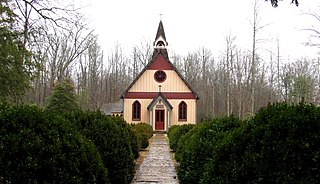
Rugby is an unincorporated community in Morgan and Scott counties in the U.S. state of Tennessee. Founded in 1880 by English author Thomas Hughes, Rugby was built as an experimental utopian colony. While Hughes's experiment largely failed, a small community lingered at Rugby throughout the 20th century. In the 1960s, residents, friends and descendants of Rugby began restoring the original design and layout of the community, preserving surviving structures and reconstructing others. Rugby's Victorian architecture and picturesque setting have since made it a popular tourist attraction. In 1972, Rugby's historic area was listed under the name Rugby Colony on the National Register of Historic Places as a historic district.

The Restoration Movement is a Christian movement that began on the United States frontier during the Second Great Awakening (1790–1840) of the early 19th century. The pioneers of this movement were seeking to reform the church from within and sought "the unification of all Christians in a single body patterned after the church of the New Testament."
Antioch is a neighborhood of Nashville located approximately 12 miles (19 km) southeast of Downtown Nashville. It is served by the Metropolitan Government of Nashville and Davidson County.

Richard Montgomery Gano was a physician, Protestant minister, and brigadier general in the army of the Confederate States during the American Civil War.
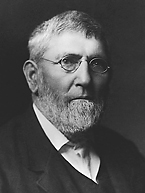
David Lipscomb was a minister, editor, and educator in the American Restoration Movement and one of the leaders of that movement, which, by 1906, had formalized a division into the Church of Christ and the Christian Church. James A. Harding and David Lipscomb founded the Nashville Bible School, now known as Lipscomb University in honor of the latter.
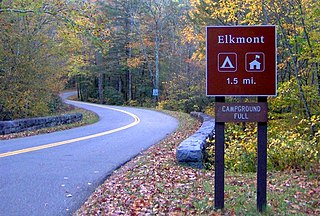
Elkmont is a region situated in the upper Little River valley of the Great Smoky Mountains of Sevier County, in the U.S. state of Tennessee. Throughout its history, the valley has been home to a pioneer Appalachian community, a logging town, and a resort community. Today, Elkmont is home to a large campground, ranger station, and historic district maintained by the Great Smoky Mountains National Park.

Joelton is a neighborhood of Nashville in Davidson County in the U.S. state of Tennessee. Joelton is governed by the Metropolitan Council of Nashville and Davidson County, because the government of Davidson County is consolidated with that of Nashville. Joelton's zip code also includes a portion in Cheatham County. In 2014, the population was 8,189.

Benjamin Franklin Cheatham was a Confederate general during the American Civil War. He served in the Army of Tennessee, inflicting many casualties on Gen. Sherman at Kennesaw Mountain, Georgia, but took the blame for General Schofield's escape at Spring Hill – a major factor in the Confederate defeat at Franklin, Tennessee in 1864. Later in life, he became a gold miner in California and a plantation owner in his home state of Tennessee.
This article pertains to the history of Nashville, the state capital of Tennessee. What is now Nashville was the center of civilization for the Mississippian culture around 1300. In 1779, Fort Nashborough was built here in 1779 by pioneers from North Carolina. In 1784 it was incorporated as a town by the North Carolina legislature. The Southwest Territory became the state of Tennessee in 1796 and Nashville became an incorporated city in 1806. In 1843 it became the state capital of Tennessee. In the Civil War Nashville was seized by Federal troops in 1862 and became a major Union military base. Confederate General J. B. Hood was decisively defeated in the Battle of Nashville in 1864. The city became the political, transportation, business and cultural center of the Middle Tennessee region. Besides the state government, it is best known for its educational, musical and religious establishments. In 1963 Nashville and Davidson County were consolidated under a single charter and are administered by a mayor and a council.
Batsell Barrett Baxter was an influential preacher and writer within the Churches of Christ.
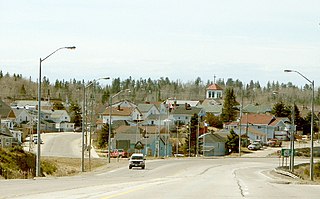
The city of Timmins, Ontario, Canada contains many named neighbourhoods. Some former municipalities that were merged into Timmins continue to be treated as distinct postal and telephone exchanges from the city core.
The following is a timeline of the history of Lexington, Kentucky, United States.
Tennessee Baptist Children's Homes, Inc, a non-profit organization founded in 1891, is a ministry of the churches of the Tennessee Baptist Convention which provides residential care and foster care support for children, as well as family care resources in the state. The organization has locations in all three regions of Tennessee, including campuses in Millington, Brentwood, and Chattanooga.

Preston Taylor was an African-American businessman, minister and philanthropist. In the early 20th century he was considered one of the most influential leaders of Nashville, Tennessee's black community. He created Greenwood Cemetery, which is the second oldest African-American cemetery in Nashville, and Greenwood Park, which was the first park for African-American communities in Nashville. A later public housing project was named in his honor.
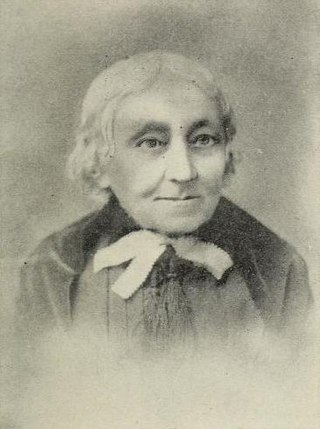
Charlotte Fall Fanning worked with her husband Tolbert Fanning to organize and run a series of schools. Ten years after Tolbert's death she opened the Fanning Orphan School.
Central Christian Church, also known in its early years as the Church of Christ in Indianapolis and Christian Chapel, is located at 701 North Delaware Street in downtown Indianapolis, Indiana. Its members formally organized on June 12, 1833, as the city's first Christian Church congregation. The congregation formally adopted the name of Central Christian Church on February 3, 1879. Its red brick and stone masonry Romanesque Revival-style church was dedicated in 1893. Building additions were completed in 1913 and in 1922. The church continues to serve the Indianapolis community and holds weekly worship services.

Bethany Hills Camp & Conference Center is a campground in Kingston Springs, Tennessee, United States owned by the Disciples of Christ.

















